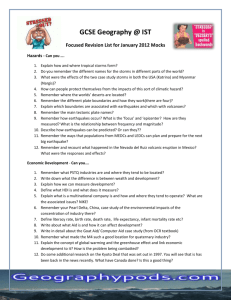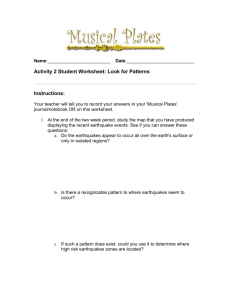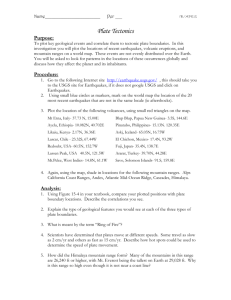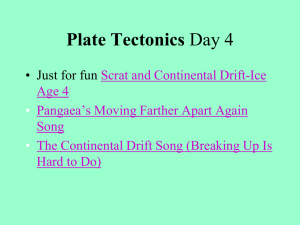Michael
advertisement
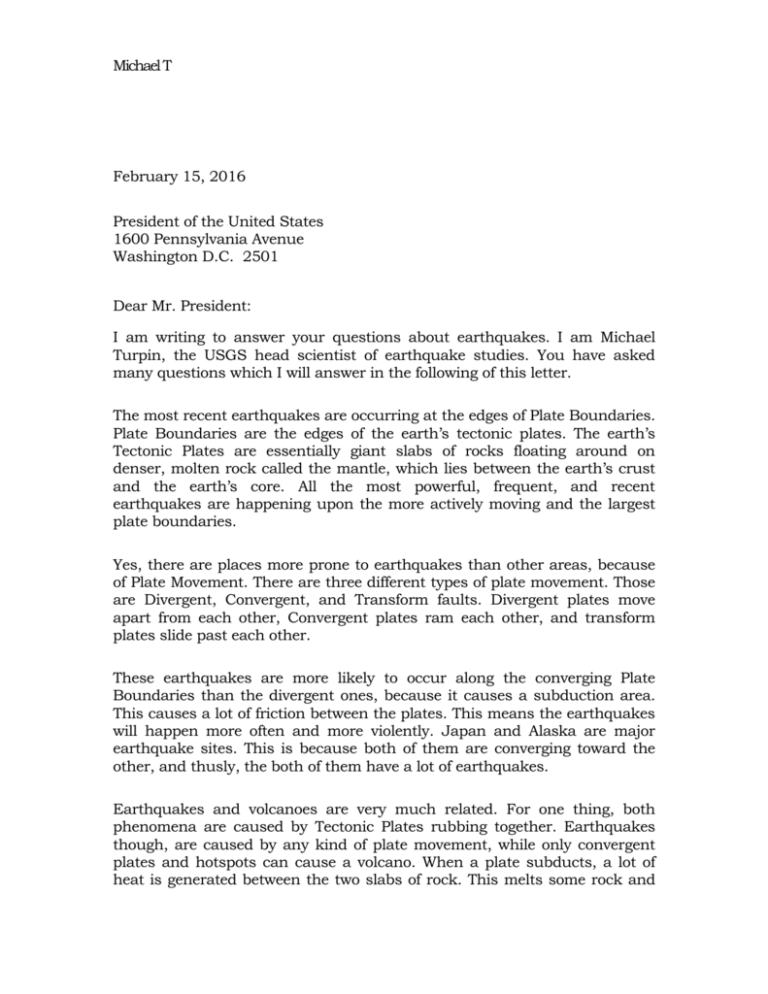
Michael T February 15, 2016 President of the United States 1600 Pennsylvania Avenue Washington D.C. 2501 Dear Mr. President: I am writing to answer your questions about earthquakes. I am Michael Turpin, the USGS head scientist of earthquake studies. You have asked many questions which I will answer in the following of this letter. The most recent earthquakes are occurring at the edges of Plate Boundaries. Plate Boundaries are the edges of the earth’s tectonic plates. The earth’s Tectonic Plates are essentially giant slabs of rocks floating around on denser, molten rock called the mantle, which lies between the earth’s crust and the earth’s core. All the most powerful, frequent, and recent earthquakes are happening upon the more actively moving and the largest plate boundaries. Yes, there are places more prone to earthquakes than other areas, because of Plate Movement. There are three different types of plate movement. Those are Divergent, Convergent, and Transform faults. Divergent plates move apart from each other, Convergent plates ram each other, and transform plates slide past each other. These earthquakes are more likely to occur along the converging Plate Boundaries than the divergent ones, because it causes a subduction area. This causes a lot of friction between the plates. This means the earthquakes will happen more often and more violently. Japan and Alaska are major earthquake sites. This is because both of them are converging toward the other, and thusly, the both of them have a lot of earthquakes. Earthquakes and volcanoes are very much related. For one thing, both phenomena are caused by Tectonic Plates rubbing together. Earthquakes though, are caused by any kind of plate movement, while only convergent plates and hotspots can cause a volcano. When a plate subducts, a lot of heat is generated between the two slabs of rock. This melts some rock and Page 2 February 15, 2016 creates superheated pockets of magma which force themselves out of volcanoes because of the extreme pressure. Earthquakes are caused by forces generated deep in the earth. These forces are called convection currents. The convection currents are caused, in turn, by heat and radioactive decay in the mantle. The process of convection is heating, cooling, and sinking. And so, Mr. President, that should answer all of your questions and then some. If you have any other questions about earthquakes, just ask. You can contact me at EQ_genius@USGS.org. Sincerely, Michael Turpin USGS lead scientist




